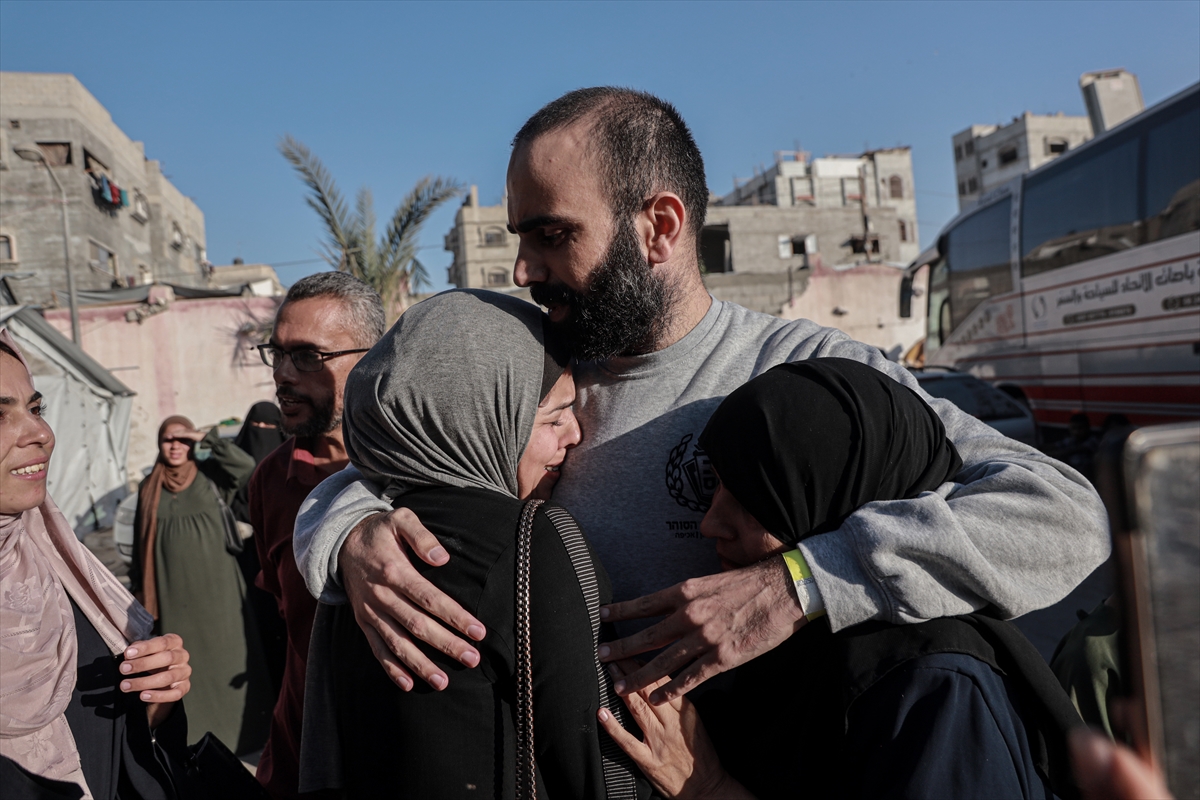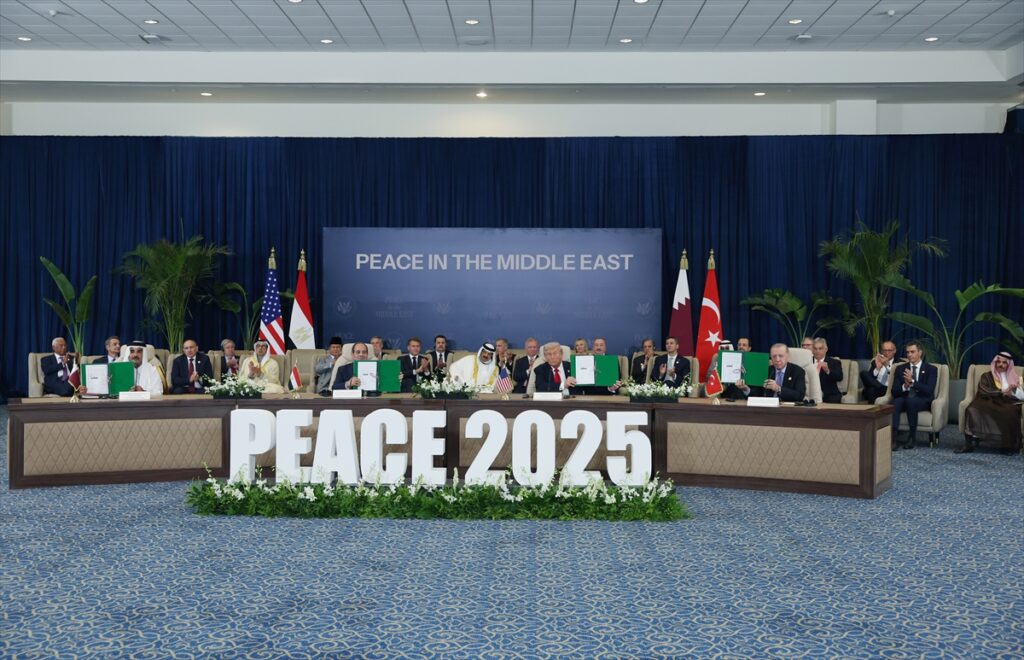
By lham Asaad Buaras
London, (The Muslim News): In the first major test of a newly brokered ceasefire, Israeli authorities released nearly 2,000 Palestinian prisoners on Monday, a key condition for a truce following a conflict that has seen Israeli military action claim the lives of more than 67,800 Palestinians.
The mass release, a central component of the initial phase of the US-backed agreement, unfolded across multiple detention sites. From Ofer Prison, west of Ramallah, buses transported freed detainees to the West Bank town of Beitunia. The Hamas-run Prisoners’ Media Office confirmed the operation, with the official Wafa news agency specifying that 96 prisoners serving long-term sentences arrived aboard vehicles operated by the International Committee of the Red Cross (ICRC).
Simultaneously, a larger contingent of over 1,700 prisoners, who had been held at the Negev Prison in southern Israel, crossed into the Gaza Strip. According to a statement from the Prisoners’ Media Office, the total release included “250 prisoners serving life sentences and long prison terms, as well as 1,718 prisoners arrested from Gaza after Oct. 7, 2023.” This figure was corroborated by Israel’s own Prison Service, which confirmed 1,968 releases.
In southern Gaza, scenes of jubilation met the first returnees. Thousands of people gathered outside the Nasser Medical Complex in Khan Younis, where the newly freed detainees underwent health checks. Crowds filled hospital courtyards and lined nearby streets, waving flags and chanting. Amid the celebration, the scale of Gaza’s destruction was impossible to ignore — the cheers echoing through shattered neighbourhoods that bear witness to years of bombardment.
The release followed Hamas’s earlier handover of 20 Israeli hostages, fulfilling its initial obligation under the ceasefire. Remains of two Israeli hostages were handed over too on Monday.
The truce itself, a centrepiece of US President Donald Trump’s plan to end the two-year war, came into effect on Friday.

[Photo: Turkish President Recep Tayyip Erdogan, US President Donald Trump, Egyptian President Abdel Fattah el-Sisi and Emir of Qatar Sheikh Tamim bin Hamad Al Thani (L) hold signed Gaza ceasefire agreement at the Sharm El-Sheikh Peace Summit in Sharm El-Sheikh, Egypt on October 13, 2025. Photojournalist: Turkiye Presidency/Mustafa Kamaci/AA]
As freed detainees returned home, world leaders gathered in Egypt’s Red Sea resort of Sharm el-Sheikh to discuss how to turn the truce into lasting peace. They had to wait for hours for Trump who was speaking in Israeli Parliament. The summit, hosted by Egyptian President Abdel Fattah el-Sisi, was attended by senior diplomats from the US, the EU, and several Arab states.
But two key absences underscored the fragility of the process. Israeli Prime Minister Benjamin Netanyahu declined his invitation, citing the proximity of a religious holiday, while Iran also confirmed it would not attend.
European officials nonetheless struck a hopeful tone. Italian Foreign Minister Antonio Tajani wrote on X: “Another step towards peace. Our task is to consolidate conditions for peace to endure… Italy will contribute to a ‘two peoples, two States solution’.”
From Moscow, Russian Foreign Minister Sergey Lavrov emphasized that any lasting peace must be based on Palestinian statehood. “It will be necessary to move on to the creation of a Palestinian state,” he told Arab journalists, urging Washington and regional leaders to ensure humanitarian aid flows freely. But he added a note of caution: “We are hearing statements from both Hamas and Tel Aviv that not everything is over yet and that the crisis could recur.”
While diplomats debated the future, the first tangible fruits of the truce began to appear on Gaza’s roads. According to the Government Media Office, 173 humanitarian aid trucks entered the enclave on Sunday, the first full day of the ceasefire. The convoy included three trucks of cooking gas and six carrying diesel fuel — lifelines for hospitals, bakeries, and power generators.
Yet officials warned that the supplies were woefully insufficient. In a statement, the media office said the deliveries were “far from meeting even the minimum humanitarian requirements” of Gaza’s 2.4 million residents. It called for “a large, continuous, and organised inflow of aid,” stressing that the 18-year Israeli blockade — dramatically tightened in March 2024 — had pushed the enclave to the brink of famine.
Meanwhile, questions over Gaza’s post-war administration deepened after President Trump appeared to retreat from his earlier proposal to appoint former British Prime Minister Tony Blair to help oversee reconstruction efforts.
In July, Trump had suggested forming a “Board of Peace” that would include Blair, describing him as a “good man.” But speaking to reporters en route to Israel, he sounded less certain. “First, I want to find out if Tony would be popular with all… I want to find out that he’s an acceptable choice to everybody,” he said.
Blair’s potential role has long divided opinion. His involvement in the 2003 invasion of Iraq — launched on flawed intelligence — continues to shadow his later diplomatic work in the Middle East, raising doubts about his credibility among Palestinians and across the Arab world.
Beyond the Middle East, the conflict’s reverberations were felt in Europe. Six Spanish activists detained by Israel for attempting to break the Gaza blockade aboard humanitarian flotillas returned home to Madrid on Monday. Among them was Reyes Rigo, who faced charges of assaulting a prison guard.
Under a plea deal, Rigo admitted guilt and paid a fine, claiming the incident occurred when she tried to protect a fellow activist. Speaking at the airport, she reflected on her ordeal. “It was nothing compared to our Palestinian brothers and sisters, there, there are women, children, and men in the prisons of a genocidal state,” she told reporters.
[Photo: Some of the Palestinians greeted by their dear ones, released by Israel under the first phase of the ceasefire agreement seen at Nasser Hospital in Khan Yunis, Gaza, for medical check-ups and scheduled events on October 13, 2025. Palestinians released through the mediation of the International Committee of the Red Cross (ICRC), and entered the Gaza Strip on buses via the Karem Abu Salem border crossing. They first arrived in the Moraj area, located north of Rafah, before being transferred to Nasser Hospital. Photojournalist: Abdalhkem Abu Riash/AA]